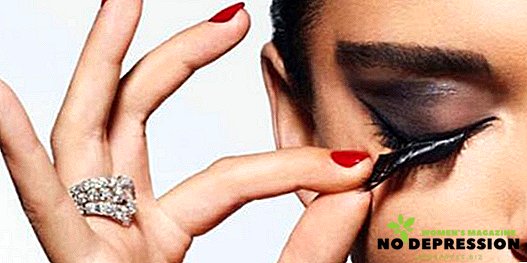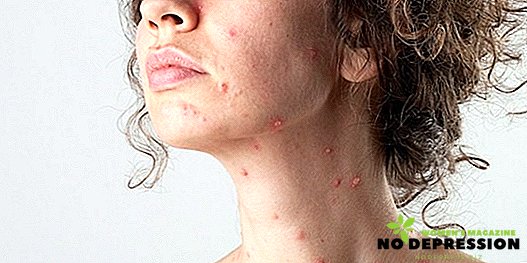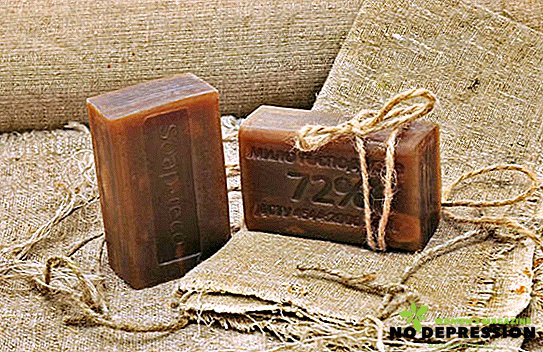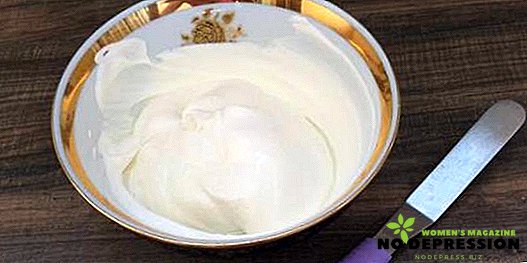The wedge-shaped defect of the teeth is a rare disease, and it is almost asymptomatic. Also, until now, doctors can not figure out the true cause of this defect: someone says about the negative effect of alcohol, others say about the lack of vitamins, microelements.
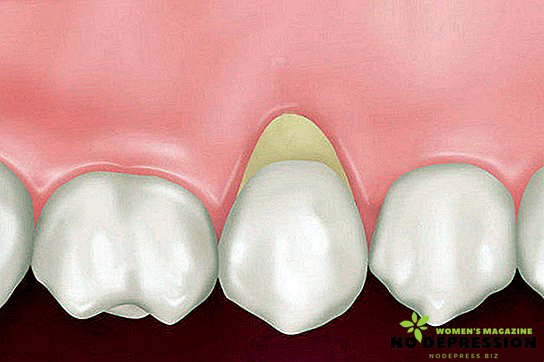
Causes and mechanism of development
Even qualified dentists can not clearly tell why this pathology is manifested and why it can progress. However, a long study of this type of lesion allowed the following theories of appearance to be advanced:
- Mechanical. It is based on the belief that this defect manifests itself as a result of a prolonged load on the tooth enamel. Proponents of this theory believe that the reason is often the use of hard toothbrushes.
- Chemical. Her supporters are convinced that the appearance and progression of such a defect occurs under the influence of acidic foods, carbonated drinks. Perhaps this is due to the fact that with any disease, the acidic contents of the gastrointestinal tract penetrates the oral cavity.
- Physicomechanical theory. It is associated with the fact that the wedge-shaped defect of the teeth manifests itself in various forms of bite disorder. According to her supporters, when the bite is disturbed, there is a serious load on some teeth, which leads to a wedge-shaped defect of the teeth.
It is also believed that this problem may be caused by:
- bad ecology;
- unhealthy diet;
- pregnancy;
- alcohol;
- infectious diseases;
- thyroid disease;
- effects of radiation therapy;
- dental disease, etc.
In short, everything that affects the calcium content in the body can affect the state of the tooth enamel. The upper part of the tooth is more vulnerable and therefore suffers most often.
An interesting theory is advanced by doctors: if people often have heartburn, they should regularly monitor the condition of the enamel, especially in the upper part of the tooth.
What symptoms should I pay attention to?
This pathology does not have pain symptoms. But there are a number of some signs that may indicate this disease. For example, the most common symptom is a darkening of the enamel in the upper part of the tooth. However, few people attach importance to this.
 In dentistry, a wedge-shaped defect of the teeth is called a non-carious disease. However, in the absence of flow in the upper (darkened) part of the tooth, the probability of caries development is high.
In dentistry, a wedge-shaped defect of the teeth is called a non-carious disease. However, in the absence of flow in the upper (darkened) part of the tooth, the probability of caries development is high.
But, of course, most patients are worried about the unesthetic appearance of their teeth. Unpleasant sensations can occur when the enamel comes in contact with cold or hot enamel. Sometimes irritation is caused by toothpaste.
These are symptoms of hypersensitivity, which is called hyperesthesia. The tooth enamel, dentin reliably protects the pulp and nerve. But when a wedge-shaped defect appears, let them slowly, but they will be affected. The change in color of the enamel can be observed on one tooth or on two symmetrically. The enamel in this place is shiny and very different from the basic tone of the tooth.
An important recommendation: in no case should the affected teeth be subjected to stress, as they may simply break.
Classification of pathology
At the moment, there are the following stages of the disease:
- The initial, at which violations are almost imperceptible. In this period, there may be a slight sensitivity to external stimuli, a slight change in the brightness of the enamel.
- The middle stage is characterized by a high level of hyperesthesia and the beginning destruction of the tooth surface.
- In the period of the progressive stage, serious defects with a depth of up to 4-5 mm can be observed. Wedge already has a well-defined framework, the edge.
- The stage of a deep disease reaches more than 5 mm. At the same time, there is noticeable enamel pigmentation and dentin may be affected.
What diseases of the teeth can confuse a wedge-shaped defect?
This pathology is almost impossible to confuse with any other disease, however, there are a number of teeth lesions with which dentists conduct differential diagnostics:
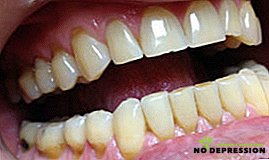 In contrast to the surface and average caries of the teeth, the wedge-shaped defect is always located in the cervical area of the teeth and has the shape of a wedge, with its tip facing the tooth cavity. In case of caries, the defect is filled with softened and pigmented dentine, there are sharp painful sensations from various stimuli. The wedge-shaped defect has dense and smooth walls, and pain, if present, has a blurred character.
In contrast to the surface and average caries of the teeth, the wedge-shaped defect is always located in the cervical area of the teeth and has the shape of a wedge, with its tip facing the tooth cavity. In case of caries, the defect is filled with softened and pigmented dentine, there are sharp painful sensations from various stimuli. The wedge-shaped defect has dense and smooth walls, and pain, if present, has a blurred character.- Erosion. However, in contrast to this disease, when eroded, there is a cup-like shape with a rough bottom, located across the entire vestibular surface of the tooth crown. Both types of non-carious lesions are rarely accompanied by hyperesthesia and never by softening and pigmentation of hard tissue.
- Acid necrosis changes the appearance of the front teeth (incisors and canines). The enamel becomes rough, matte and changes its color to a dirty gray. Teeth become sharply sensitive to all kinds of irritants. Gradually, hard tissues dissolve and form sharp areas that easily break off. Crowns of the teeth take the form of a wedge, and then completely destroyed to the level of the gums.
- With a wedge-shaped defect, similar symptoms are not observed. Enamel does not change its color and does not collapse. The loss of hard tissue is observed only in the cervical teeth.
To distinguish a wedge-shaped defect from other dental diseases is quite easy. It is important to make a correct treatment plan after diagnosis.
Features of the treatment of this disease
If a wedge-shaped defect does not have a large area, it should not be filled - it is much safer to carry out the correct preventive measures. So, dentists can prescribe medication with a high content of calcium and special means with fluorine.
There are the following methods of treatment.
- Fluoridation. If you carry out treatment at home, you should buy toothpaste with fluoride and calcium. Also on sale you can find special gels, but they are also recommended to use as directed by the doctor.
- In case of more complex problems with teeth, it is required to perform a filling with the use of composite materials. After this procedure, the sensitivity disappears, spots disappear. True, in this case it is worth remembering that over time the seal may still fall out.
- A more progressive method is the restoration of teeth. For this, veneers, a thin ceramic plate, are placed over the fillings. True, this is not the best option, since an additional load is placed on the teeth, and the veneer must be changed regularly.

It is worth remembering that a very difficult moment is the preparation of the tooth for the surgery. Many dentists recommend using a laser to relieve pain. This is a more efficient, but quite expensive method.
But the laser cleans the surface better, destroys bacteria. After such treatment, the fillings practically do not fall out. And the most important thing is that laser treatment is carried out at one time, while the usual methods force a person to visit the clinic several times. If we consider that the preparatory procedures are sometimes quite long, this may take more than one month.
Preventive measures for wedge-shaped defect of teeth
Based on the fact that the true cause of this pathology is not clear, it is difficult to find certain methods that can guarantee the prevention of such a disease.
However, there are a number of points that will help keep the tooth enamel healthy and strong:
- Regular oral and dental hygiene;
- Avoiding foods high in acid;
- Tooth protection from excessive mechanical stress;
- The use of a toothbrush of medium hardness;
- Correction of bite defects in time (12-13 years).
In addition, noticing the above symptoms, you should immediately contact the experts to quickly eliminate the cause of the disease.
Features of traditional medicine
First of all, you should definitely reconsider your diet, nutrition, lifestyle. For example, if there are prerequisites for such a disease, then it is necessary to exclude alcohol, cigarettes. It is recommended to enrich the diet with foods that contain a lot of calcium and fluoride.
If almost everyone knows where a lot of calcium is contained, then with fluoride is a little more difficult.
According to experts, this component is contained in products such as:
- sea fish, seafood;
- oysters;
- chicken breast;
- liver;
- tea;
- sea kale;
- bananas;
- walnuts;
- wine.
If we talk about wine, then, of course, it contains fluorine, but this remark can be applied only to natural species and only in reasonable quantities. Alcohol most often removes calcium from the body, which, on the contrary, has a worse effect on the teeth.
But there are a number of methods of traditional medicine, which should look:
- Propolis tincture. Need to take a little propolis, infused with alcohol. This tool must be diluted with a small amount of water and rinse their teeth after each meal.
- Be sure to consume sea kale. It should be mixed with parsley, sage, basil, salt (and it is better to use iodized salt), add a little olive oil. Consume this salad every day.
- Cockleshell with mother-of-pearl coating. They need to be washed, dried, crushed into powder, put a little on the tip of the tongue and spread over the surface of the teeth. Excellent "building" material.
- You can include in the diet leaflets of lemon, which strengthens the gums.
- It should eat horseradish in its natural form.
- Do not forget about honey and cinnamon - they are mixed in equal proportions, rubbed into the gums.


 In contrast to the surface and average caries of the teeth, the wedge-shaped defect is always located in the cervical area of the teeth and has the shape of a wedge, with its tip facing the tooth cavity. In case of caries, the defect is filled with softened and pigmented dentine, there are sharp painful sensations from various stimuli. The wedge-shaped defect has dense and smooth walls, and pain, if present, has a blurred character.
In contrast to the surface and average caries of the teeth, the wedge-shaped defect is always located in the cervical area of the teeth and has the shape of a wedge, with its tip facing the tooth cavity. In case of caries, the defect is filled with softened and pigmented dentine, there are sharp painful sensations from various stimuli. The wedge-shaped defect has dense and smooth walls, and pain, if present, has a blurred character.
